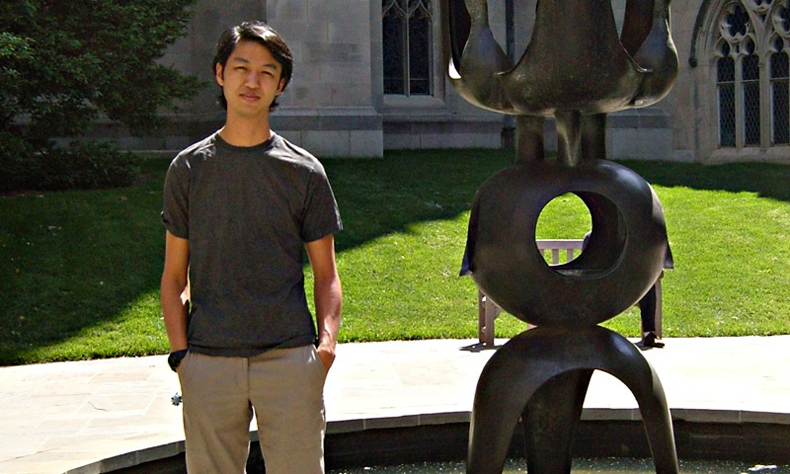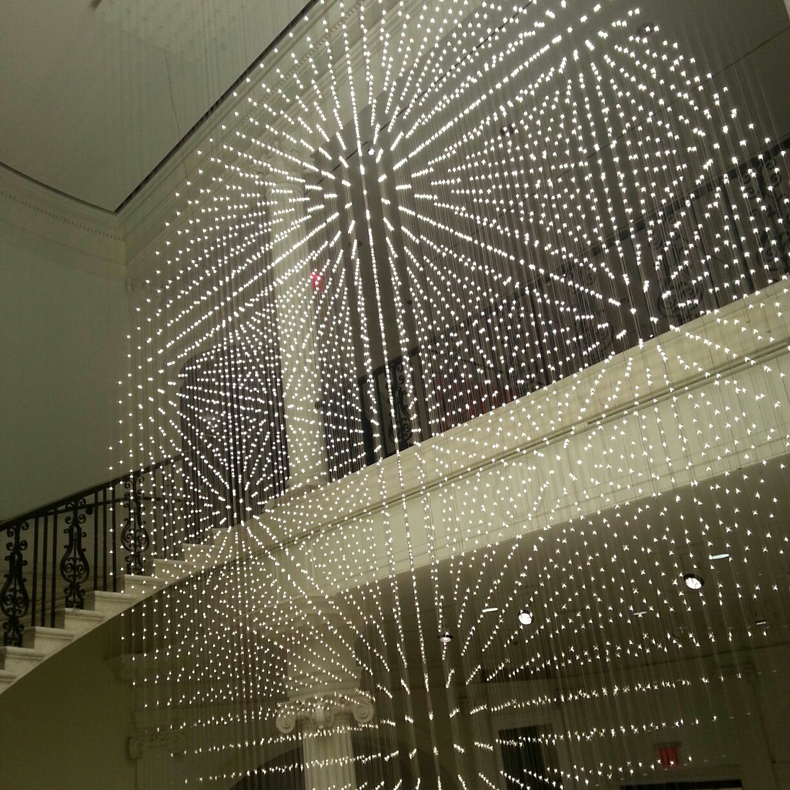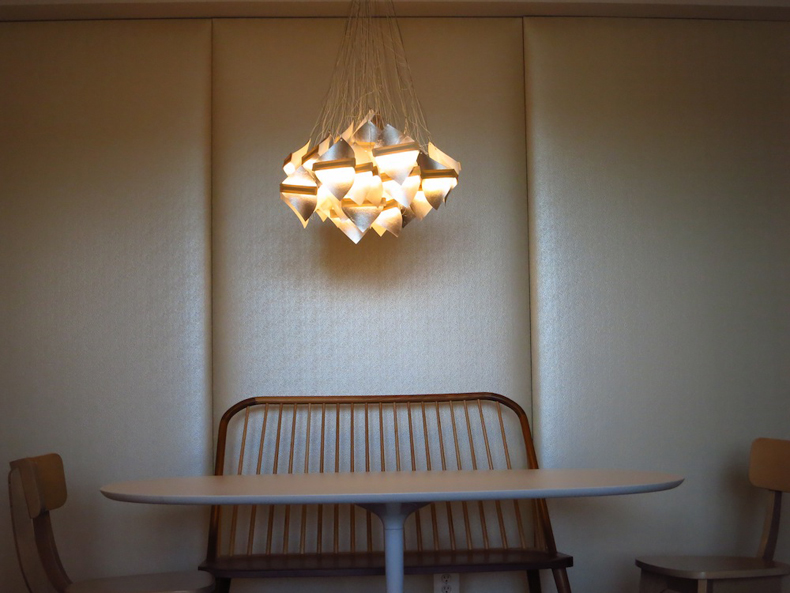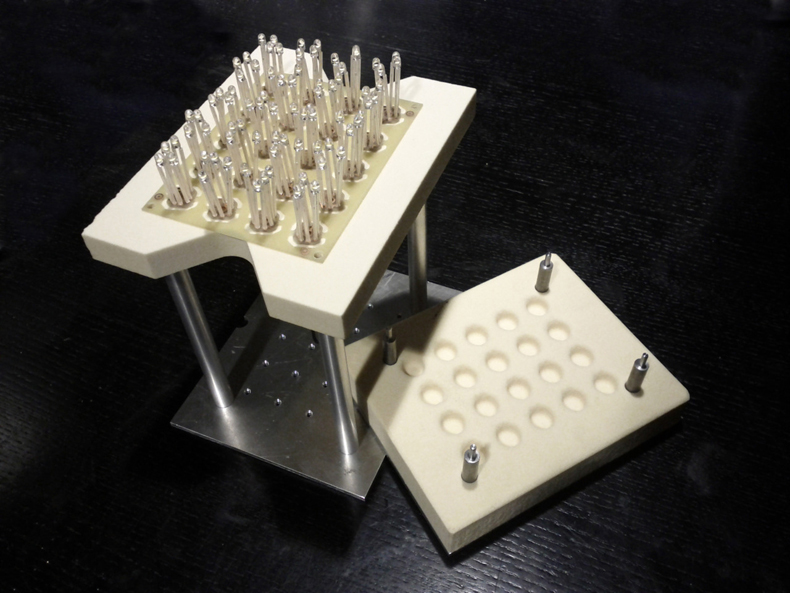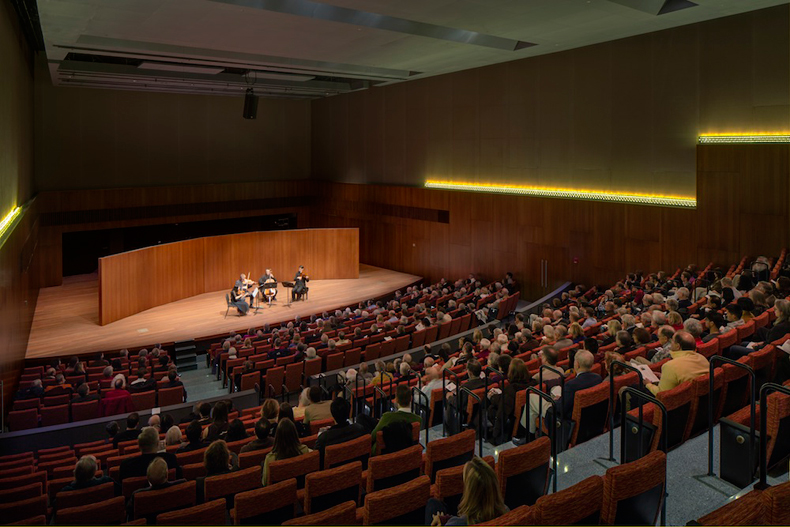Mar 04, 2013 8 Questions With: Kenzan Tsutakawa-Chinn
We were first introduced to Kenzan Tsutakawa-Chinn of Studio 1Thousand through our colleague, jeffstaple, who recommended him as a craftsman for our Architecture for Dogs brand. Studio 1Thousand is a LED lighting design firm working to realize complex architectural ideas and bringing abstract ideas to fruition. Our examination of Kenzan’s work revealed an incredible portfolio, from large scale illumination installations to museum chandeliers. The values, inspirations and philosophies that drive his creations are evident in this thoughtful interview.
What has been one of your most rewarding projects? In what way?
I would have to say the project we’ve just installed, at the Museum of the City of New York because it gives people the chance to interact more closely with the work more than anything else I’ve done. It’s also an amazing example of the modernity that New York produces in a building, which was constructed during the 1920’s, which was an amazing time in the expansion of philanthropy and the arts in NYC. So for the viewer, our modern installation highlights the older space through juxtaposition.
I’m constantly fascinated by how abstract ideas become physical realities. One of the most fascinating intersections is that between an object made by hand vs. made by computers, and a lot of our work uses both to reach completion. I strive to strike a visual balance between the vibrancy and personal nature of hand-made and the futuristic aesthetic of computerized and/or mass-manufactured.
In this installation, we’re replacing a 500lb brass chandelier with a chandelier 7x larger in physical dimension, half the weight, and 5x the light output. This is the sort of amazing result recent LED technology has afforded us. The work is based on a matrix of small pixels that would be a beast to manage and think about without the help of computers. However, even thought most of the planning is computer based, 95% of the work will be done by hand, soldering each of those pixels in, one at a time, one connection at a time. This practice is what helps us achieve that visual balance I referenced earlier.
What are you currently working on?
After this project we’re going into a sales cycle — which is a fancy way of saying we have no contracts active in the immediate future. In this phase, we retreat to our nest of ideas and start to develop a library of new LED fixture technologies. We want our work to be scalable, so developing new fixtures gives us the ability to prepare for unforeseen projects and consider fixture solutions for the types of projects we want to win. It’s a very specialized offering, so we sort of know what we want to be able to offer.
Right now we want to be known for developing new display technologies that demonstrate the versatility of LEDs use in non-traditional locations. We want to be the company known for taking a lighting technology that was once considered utilitarian (think indicator lights, alarm clocks) and making that technology create light in beautiful and unexpected ways. The technology is now available and affordable enough for this to happen, and we’re going to be leading the way.
So in short, we want to cover walls, we want to develop micro lighting environments, and we want to make the warmth of LED lighting known to the world all while helping expand people’s enjoyment of lighting.
How do you choose your projects?
At this early stage of S1k, we’re pushing to take on the kinds of projects that change the way LED lighting is considered. We started with much smaller scale lighting, lamps and home décor pieces. But we realized that the real offering and value comes from mass scale. This is where we shine, literally.
When we choose a big, public projects, like the Museum of the City of New York or Logan Arts Center at the University of Chicago, it shows the world what LEDS can do. The more we can show that, the higher demand there is for the technology, and the more great projects we win.
That said we’ve found ways for much smaller projects to work for us too, so don’t hesitate to call!
Where do you find inspiration?
I find the most inspiration in the imagination of man, and the glory of the physical world. Some examples: in today’s world, we take for granted the shapes and precision that computer and CNC can give us. But the repeatability that this gives us is very different then process by which a basket maker or a weaver implements improvements. I find inspiration in the small details that add personality to an object.
Separately, I find inspiration in light itself. I talk about its glory, because it’s a substance that even physicists can’t fully explain. From an animistic perspective, the light itself, explains how it wants to be used. I search for avenues, or even small alleyways, that help explain the complexities of light to the viewer.
As a kid, what did you want to be?
As a kid, I never really had aspirations of what I “wanted to be.” But I grew up in a family of artists, who make sculpture. Tinkering, fabrication, and mechanical acuity have always been matched with the examination of color, form, craft, and subtlety.
What is your favorite place to travel? Why?
I’m not sure I have a physical favorite place, but I love to travel. I love examining the way that different cultures solve problems. The way they act, think, talk about problems lends itself to solutions, most often utilizing the materials at hand. The culture of problem solving is always so fascinating.
What is your favorite post-work destination?
After a day in the studio of fabrication space, I like to swing through Manhattan on my BMX Cruiser, visiting friends and decompressing. What do we talk about? My work, their work, why people do things and food.
Who are your favorite artist?
I have four favorite artists. Isamu Noguchi, Olafur Eliasson, George Nakashima, Andy Goldsworthy. I’ve spent time with all of their works, touching, watching, and enjoying up close. All four of them have an intense relationship with nature and natural properties. In their respective media – stone, wood, time, light – they are the best. They understand, explore and expand our subconscious knowledge of these materials. I hope to be able to do that with light.



